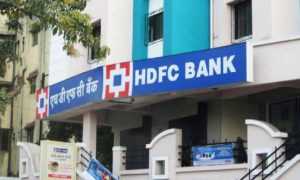Adani group companies’ market value has plunged by $108 billion ever since US-based Hindenburg Research alleged fraud and stock manipulation against the Gautam Adani-led conglomerate. Shares of several banks including State Bank of India (SBI), Bank of Baroda, and Punjab National Bank (PNB) also came under pressure as concerns about these banks’ exposure to Adani group rose. Following this, the Reserve Bank of India (RBI) has reportedly sought details about lenders’ exposures to the Adani Group. According to Reuters, the information being sought by the RBI includes details of collateral being used to back loans and any indirect exposure banks may have. Meanwhile, Bloomberg cited Finance Secretary TV Somanathan saying that PSU banks and LIC’s exposure to Adani companies is very low, and that India sees no contagion risk from the Adani crisis.
Read More: PAN Card For Minor: From Procedure To Required Documents; Check Step By Step To Apply Here
PSU banks’ exposure to Adani group
SBI loans to Adani: How safe is the money?
India’s largest lender SBI had recently said that its exposure to Adani group is fully secured by cash generating assets. SBI’s exposure includes $200 million from its overseas units, said the report. Dinesh Kumar Khara, chairman of SBI, said earlier on Thursday. However, a Bloomberg report citing sources stated that SBI has given loans of as much as Rs 21,000 crore ($2.6 billion) to Adani Group firms. This is half of what is allowed under rules, it said. Note that State Bank of India shares were down 0.79% on Friday. The stock has fallen nearly 5% in the last five days.
PNB, Bank of Baroda exposure to Adani: Secured by what?
Public sector lender Bank of Baroda has also said that its total exposure to Adani group stands at Rs 7,000 crore, which is fully secured. Another PSU bank Punjab National Bank has a Rs 7,000 crore exposure to Adani conglomerate. “PNB’s funded exposure stands at Rs 6,300 crore, non-funded at Rs 700 crore,” said MD and CEO AK Goel recently, adding that exposure toward Adani Group’s airport business is at Rs 2,500 crore. “All exposures are backed by cash flows, no exposure against shares. We have no worries as on date with regard to our exposure to the group. We will be keeping watch on all developments,” Goel assured in a press briefing. Bank of Baroda and PNB shares were down 0.16% and 2% respectively on Friday. In the last five trading sessions, the scrips have fell 4.64% and 6% respectively.
Read More: PAN As Single Business ID For Digital Systems To Promote Ease Of Doing Biz: DPIIT Secy
IDFC Bank: Where is the exposure to Adani companies?
Meanwhile, IDFC First Bank has said that the bank doesn’t have any exposure to Adani offshore companies and their exposure to top 10 borrowers has also lowered. However, the lender stated that they are comfortable with exposure to Adani Group. IDFC First Bank has funded outstanding of 0.06% and non-funded outstanding of 0.51% to Adani. The bank further stated that they are receiving payments from the conglomerate as per the schedule. IndusInd Bank has also clarified that its total loan outstanding to Adani Group was 0.49% of its total loans and non-fund-based outstanding was 0.85%.
Adani crisis NOT a systemic risk for the Indian banking system
According to a report by Jefferies, total banking sector debt to Adani Group is at 0.5% of total loans. Exposure of public sector banks is estimated at 0.7%, while that of private banks at 0.3%. “The way I look at it is, that it is not really a systemic risk for the Indian banking or the financial system. Basically, it should not be viewed as a risk for the system as a whole,” said Mahesh Nandurkar, MD & Head of research, Jefferies in an interview with ET Now.
Private banks, other lenders’ risk from Adani exposure
Meanwhile, analysts at CLSA said in a recent report that Indian banking exposure is less than 40% of total Adani group debt. Within this, private banks’ exposure is below 10% of total group debt, and most banks, including ICICI Bank and Axis Bank, have indicated that they have largely financed assets with strong cashflows, such as airports/ports. PSU banks do have material exposure at 30% of group debt, but this debt has not increased in the past three years. Most of the incremental funding to the group for new businesses and acquisitions has come via overseas sources. “To conclude, the ballpark exposure of private banks is 0.3% of FY24 loans and 1.5% of FY24 networth. For PSU banks, the exposure is 0.7% of FY24 loans and 6% of FY24 networth,” CLSA said.
Read More: Amul Increases Milk Prices by Rs 3 Per Litre From Today; Know Details
Market overpricing risk to Indian lenders from exposure to Adani Group: SocGen
French-based multinational financial services company Societe Generale believes that markets are “overpricing” the risk to Indian lenders from their exposure to Adani Group. The sell-off in banking shares seems overdone, it said. “India’s banking sector has been one of the hardest hit by the collateral damage from the sharp correction in the Adani group stocks over the past week post the Hindenburg report. We think the market is overpricing the related risks, as we calculate the sector’s direct exposure to the Adani group at just 0.6%,” SocGen strategists said in a report issued on Wednesday.
It further stated that their stress test signals no systemic risk for banks even in an adverse scenario. Assuming no significant change in the debt structure over the past year, SocGen estimated that Indian banks’ loan exposure to Adani was close to $10 billion, just 0.6% of total banking sector loans at nearly $1.5 trillion.



































